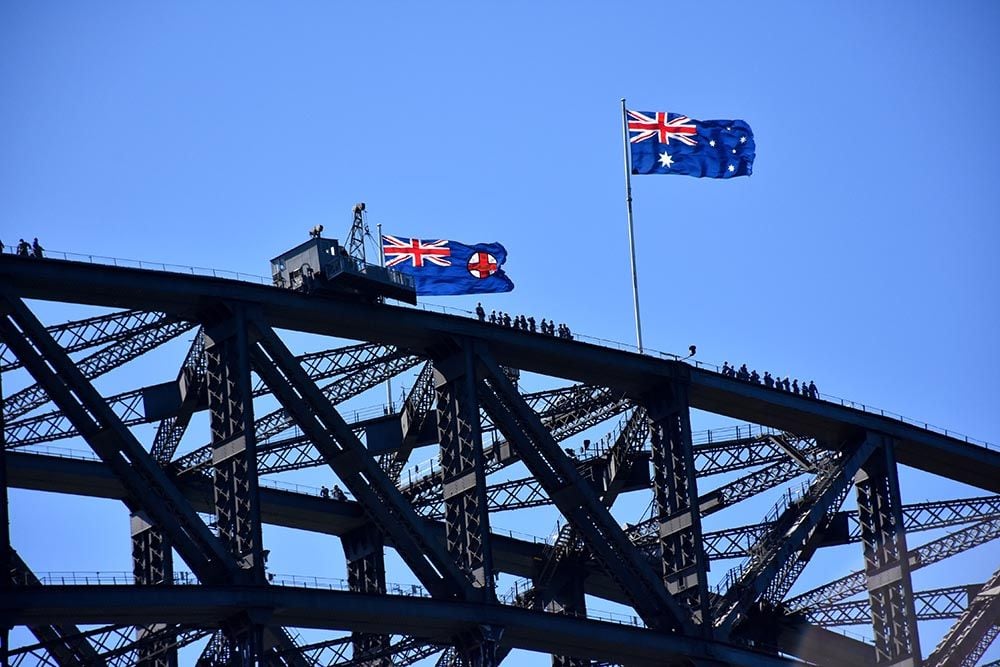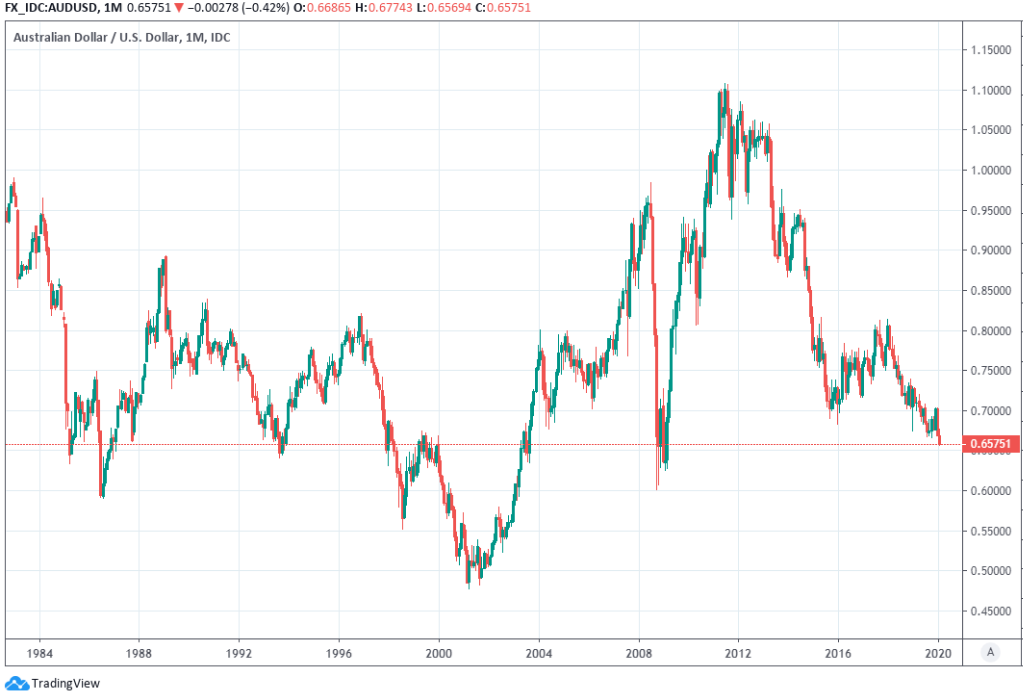The Australian Dollar Hits Decade Low but It's "Not Cheap" Says Westpac
- Written by: James Skinner
- AUD/USD hits lowest since March 2009 amid virus fears.
- Risk assets fall as virus threat to global economy steps up.
- Investors flock to bonds- dump AUD, stocks, other risk assets.
- Italy has more than 300 cases, up from zero, just last week.
- As virus extends foothold in Japan, South Korea and Iran.
- Westpac says AUD not cheap, eyes more losses up ahead.
- Tips risk of AUD/USD falling to bottom of "fair value" range.
- Sees GBP/AUD rate hitting post-referendum high of 2.0.

Image © Desiree Caplas, Adobe Stock
- GBP/AUD Spot Rate: 1.9738, up +0.28% today
- Indicative bank rates for transfers: 1.9052-1.9190
- Indicative broker rates for transfers: 1.9447-1.9565 >> find out more about this rate.
The Australian Dollar hit its lowest level since March 2009 Wednesday as investors continued to count the possible cost to the global economy from the spread of the new coronavirus, although strategists at Westpac have preemptively told clients the antipodean currency is "not cheap."
Australia's Dollar is among the most susceptible to a global economic downturn given its export connection to China and broader exposure to commodities which, when combined with the spread of coronavirus, explains how the Aussie has fallen 6.2% against the U.S. Dollar and 4.43% against Sterling in 2020.
The AUD/USD rate was down 0.46% at 0.6574 while the Pound-to-Australian Dollar rate was up 0.28% at 1.9728 as investors continued the flight to safety that's pushed major economy bond yields to record lows since Sunday's open as governments across the world confirmed more cases of coronavirus.
"The A$ has fallen sharply in recent weeks as a result of multiple headwinds including the drought, bushfires and more recently the rapid spread of COVID-19," says Westpac's Sean Callow. "We would argue that the drop in the A$ is actually just in line with where 'fundamental' drivers suggest the A$ should be. The midpoint of our A$ short term fair value model currently sits at 0.6590."

Above: Pound-to-Australian Dollar rate shown at 4-hour intervals alongside AUD/USD rate (red line).
Italy's government has said it's aware of 322 cases of coronavirus, up from zero last week, that now span almost half of the country's 20 regions although Lombardy and Veneto regions currently account for 283 between them. So far 10 patients have succumbed to the disease and one has recovered. Austria and Spain have also reported outbreaks this week. Those are in addition to more cases in Japan, South Korea, Iran and others.
The contageous form of severe pneumonia is spreading rapidly across the globe while authorities have few if any answers on how the virus has managed to take hold in places as far afield from China as Veneto and Lombardy without being detected before. And with some Italian towns and villages having been quarantined, Europe has had its first glimpse of the disruption that was previously seen only in China but which epidemiologists say is the only reliable method for preventing transmission.
"Bottom line, the A$ does not look cheap to us - for that to be the case, we would need to see a drop well below 0.65," Callow warns.

Above: AUD/USD rate shown at monthly intervals.
Now investors and governments the world over are fearing significant disruption to commercial activity and a possible sudden stop of economies similar to that seen in China, where entire cities turned desolate as citizens isolated themselves in order to avoid infection.
TomTom data suggested that traffic in the capital Beijing was 60% below its typical levels, marking a deterioration from the 49% decline seen Tuesday.
Drinks giant Diageo said Wednesday that trade in countries near China "especially South Korea, Japan and Thailand" had been disrupted and that it could be April before the situation improves. It says this would likely cost amounts that are equivalent to around 1% of 2019 global sales and 5% of operating profit. Anglo-Australian mining giant Rio Tinto says it's "currently evaluating the impact" and that its products are still reaching cutstomers.
"As the Covid-19 outbreak has dominated market attention over the past month, it is not surprising that the Australian dollar has underperformed among G10 currencies, with only NZD weaker. The British pound has limited its decline against a dominant USD to about -1%," Callow says. "We expect disappointing Australian growth and unemployment data to force the RBA to resume easing policy, keeping GBP/AUD trending higher, eyeing 2.00 multi-week."

Above: Pound-to-Australian Dollar rate shown at weekly intervals.




